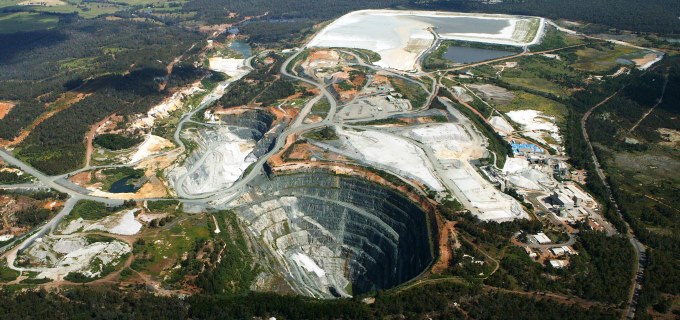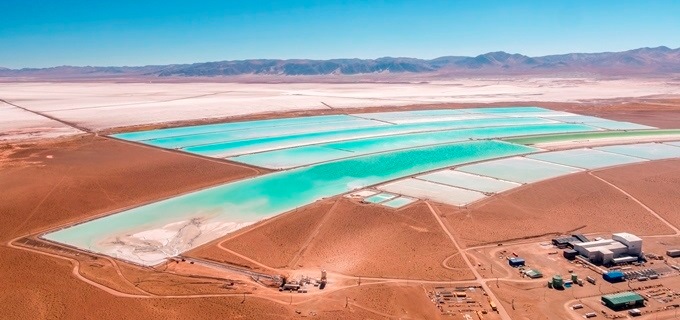Subscribe
Sign up for timely perspectives delivered to your inbox.
David Whitten, Head of Janus Henderson’s Global Natural Resources Team, provides an overview of the lithium sector and its outlook amidst strong demand growth.
The outlook for lithium and other battery raw materials remains buoyant and attractive. However, the market currently appears confused regarding how the interplay between demand and supply growth will play out.
The evolution of electric vehicles (EVs) is the key driver of demand growth. We continue to see rolling announcements and plans by automakers to prepare for the upcoming manufacture of EVs.
Recently Volkswagen, the world’s largest automaker, articulated plans to develop 30 EV models and produce over 2 million EVs per year by 20251, while Volvo recently announced their plans for every vehicle launched from 2019 to have an electric motor as part of a transition toward EVs2. Many other automakers are doing the same, with over 120 EV models either currently in development, testing or manufacture. Both France and the UK have announced plans to ban internal combustion auto sales by 2040, demonstrating that governments are supportive of the transition.
We believe the consensus view from the auto and battery industries is that once EV battery pack prices fall below $150 per kilowatt hour, EVs will be cost-competitive with internal combustion engines. Some sources suggest that this price threshold may have already been surpassed3, and as the battery pack currently represents 50% of an EV’s price, any reduction here will increase competition with conventional cars and further stimulate EV demand growth.
The impact on the lithium sector will be material as the scale of the industry will expand significantly. The global lithium market in 2016 was around 189,000t LCE. Compared to other commodity/metal markets it is very small and the rate of growth will be highly dependent on the EV market penetration rate. A recent UBS report suggested that it could expand to 870,000t LCE by 2025, assuming global EV sales go from under 1 million units in 2016 to 15 million units by 2025 (the current global auto market is around 75 million units p.a.)4.
To use an analogy, the lithium market is at a point where it could grow like the Chinese steel industry, where demand increased from approximately 100 million tonnes (mt) in the late 1990s to over 800mt by 2012. While the scales are different, the impact on the supply chain will likely be similar.
For this potential demand to be realised and the supply chain to be built, there needs to be significant capital invested to develop the numerous hard rock and brine deposits currently under evaluation around the world.
The battery industry, which consumes battery-grade lithium carbonate/hydroxide, is also going through a major investment phase with tens of billions of dollars being spent on new factories, such as Tesla’s ‘Gigafactory’, to supply future battery packs.
Subject to demand growth and markets at that point in time, they will likely impact the cost curve and lithium product prices.
The outlook remains robust. Albemarle, the industry leader, recently upgraded its 5 year demand growth forecast to 35,000t LCE p.a. from 20,000 p.a.5, this is more than a 15% compound annual growth rate. What we have seen recently is that demand continues to surprise on the upside, and supply continues to underperform. We have seen most of the hard rock projects delayed due to permitting or financing, with many now 6 to 9 months behind schedule. Orocobre, which has built the first brine project in 20 years, is still running at 70% of nominal capacity about 2 years after start up. It continues to produce larger quantities of technical grade product than anticipated, confirming that achieving a high quality product takes time.
Several research reports have suggested that recently developed and proposed hard rock projects will swamp the market, leading to surpluses and therefore a fall in lithium prices from 2018. In our view, these look too bearish given the delays.
The market has also been spooked by the emergence of direct shipping ore (DSO) as a saleable product. DSO is unprocessed ore that is mined and shipped to China to be processed. The market interpreted this as a readily available cheap source of lithium units that would somehow swamp the market. Our interpretation is that DSO remains a high cost source of lithium units, requiring high prices to be viable. Our opinion is that if prices fell by 15% to 20%, this source would be uneconomic.
Supply sources are limited. Defined hard rock resources are located mainly in Australia, Canada and US, while brines are mainly in Chile and Argentina. Chile has become a more difficult place to operate in, constraining supply growth, while Argentina is currently attracting capital to develop new brine supply.
The battery industry is expanding capacity to meet the forecast EV demand, which is being mirrored by converters’ capacity. The level of investment in the raw material part of the chain (hard rock mines and brines) is accelerating, but needs to accelerate faster.
In our opinion, the lithium story is not about continually higher prices, they are attractive enough. The story is now about project investment, execution and project delivery by the industry. It is the classic equity story of value creation through project appraisal, financing, construction and production.
Lithium is a chemical element that naturally occurs in granites in the form of spodumene and petalite minerals, in clays and as an ion in brine solutions that form in salt lakes or ‘salars’. Due to these different sources of lithium, there are varying processes required to extract it. While lithium enjoys positive demand fundamentals, the extraction processes have different cost structures and economics of production.
[caption id=”attachment_227088″ align=”alignnone” width=”680″] Talison Lithium’s Greenbushes lithium operations, Western Australia.[/caption]
Talison Lithium’s Greenbushes lithium operations, Western Australia.[/caption]
The hard rock extraction process generally involves open pit mining (and potentially underground) to produce a spodumene concentrate which is currently sold into the Chinese converter market. These converter plants then chemically convert the spodumene concentrate into a market-suitable form for battery cathode manufacture.
Hard rock deposits appear to be quicker and easier to develop than other processes and are hence more responsive to market demand. However, for converters dependant on third party raw materials, the cost of production is high – ranging from $8,000-$10,000/t of lithium carbonate equivalent (LCE).
[caption id=”attachment_227077″ align=”alignnone” width=”680″] Orocobre evaporation ponds and plant, Salar de Olaroz, Argentina.
Orocobre evaporation ponds and plant, Salar de Olaroz, Argentina.
Image courtesy of Orocobre Limited.[/caption]
The brine extraction method pumps brine from a salar into a series of evaporation ponds in order to concentrate it prior to the final conversion. Given variations in brine chemistries, the operating costs can vary between $2,000-$4,000/t LCE. Lithium sourced from brines tends to be more cost-competitive, but it also tends to be a slower process due to its reliance on natural evaporation, which takes 18 to 24 months. While a number of technologies have been tested to speed up the evaporation process, none have yet been commercialised. New projects tend to take time to develop and ramp up to capacity and therefore, this source of lithium is not as responsive to market demand. Although there are a number of brine projects under consideration and development, they will not impact the market until 2020.
Dollar figures are in US dollars (USD).
Stock examples are intended for illustrative purposes only and are not indicative of the historical or future performance of the strategy or the chances of success of any particular strategy. References made to individual securities should not constitute or form part of any offer or solicitation to issue, sell, subscribe or purchase the security.
1. http://www.bbc.com/news/business-36548893.